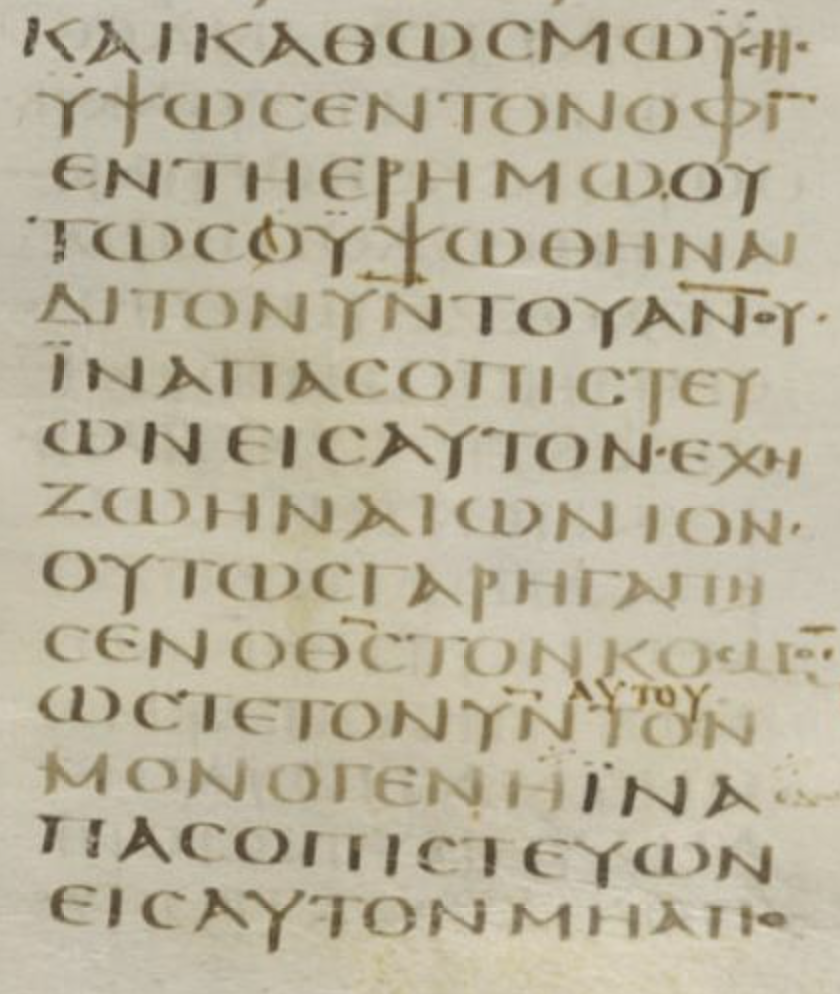When it comes to Bible translation, we must remember the maxim that all translation is interpretation. Before someone can translate a text, they must interpret it. If I say in German, Ich habe Hunger, I must interpret this to understand that it means “I am hungry.” If I do not interpret the meaning correctly, I will come out with “I have hunger,” which is essentially a nonsense statement in English.
It makes sense that translators must interpret the meaning and proper relations of words to arrive at valid English equivalents, but there are other aspects that Bible translators must take into account as well. Some of these aspects arise due to the formatting, grammar, and punctuation rules of English. For the purposes of this post, we are thinking specifically of the need to enclose direct speech and quotation within quotation marks. If I write, Ben said I am going to the store, we get a level of ambiguity without the proper punctuation. Am I going to the store? Is Ben going to the store? But when I write, Ben said, “I am going to the store,” the ambiguity is removed and it is perfectly clear who said what and who is going where.
As the Bible was originally written in both Hebrew and Greek, there were no punctuation marking the beginning or ending of quotations and direct speech. Understanding where direct speech starts is rarely a problem due to phrasings such as “he spoke, saying” or “he answered, saying,” and so forth. But the end of a quotation can be a bit trickier since there are no specific markers to indicate that the speaker has stopped speaking—though context usually does indicate where the speech ends.
A perfect example of how translators must interpret where speech stops is in the passage from John 3:10–21. In verse 9, Nicodemus responds to Jesus’s statement about needing to be born again with the question, “How can these things be?” Jesus begins his response to Nicodemus in verse 10, which is marked by the statement in Greek, “Jesus answered and said to him” (ἀπεκρίθη Ἰησοῦς καὶ εἶπεν αὐτῷ), which is often abbreviated to just “Jesus answered.” There is no ambiguity as to where Jesus starts speaking. But where does Jesus stop speaking? In the Gospel, John sometimes interjects his own commentary without any warning. The question here is whether Jesus continues speaking all the way through verse 21, or whether Jesus’s speech ends in verse 15 and John’s commentary begins in verse 16 and goes through verse 21. Below is an image of Codex Siniaticus to demonstrate how the text was originally written. You can see verses 14 through to the first half of verse 16. Notice how there are no breaks in the text? I also provide a wooden English equivalent in columns below it so that you can better understand how it is written:
ANDJUSTASMOSES
LIFTEDTHESERPENT
INTHEWILDERNESSLIKE
WISEBELIFTEDUP
MUSTTHESONOFMAN
SOTHATALLWHOBELIE
VEINHIMMAYHAVE
LIFEETERNAL
FORINTHISWAYLO
VEDGODTHEWORLD
SUCHTHATHISSON
THEONLYSOTHAT
ALLWHOBELIEVE
INHIMMIGHTNOTPER
And to make it a little easier to read:
AND JUST AS MOSES
LIFTED THE SERPENT
IN THE WILDERNESS LIKE-
WISE BE LIFTED UP
MUST THE SON OF MAN
SO THAT ALL WHO BELIE-
VE IN HIM MAY HAVE
LIFE ETERNAL
FOR IN THIS WAY LO-
VED GOD THE WORLD
SUCH THAT HIS SON
THE ONLY BEGOTTEN SO THAT
ALL WHO BELIEVE
IN HIM MIGHT NOT PER-
Again, note that there is no punctuation and that words often continue from one line to the next with no marker indicating that the word has been split (the scribe was also a little sloppy here and missed the verb “gave”). Now translators don’t work from manuscripts that look like this. They work from printed texts (see below) which are much easier to read (and have errors corrected), but even still, quotation marks are not added, though other punctuation is.
Bible translators must contextually determine whether Jesus continued to speak, or whether John broke into the discourse and expanded further on the significance of what Jesus was saying. If you consult translations like the ESV, NLT, or NASB, the quotation continues all the way through to verse 21. John 3:16 is spoken by Jesus. But if you look at translations like the NIV or the NET, they close the quotation at verse 15, so that verses 16–21 must be understood as John giving his own commentary on Jesus’s words. John the evangelist is the one who spoke the words of John 3:16 in this case.
So who spoke John 3:16? Personally, I am partial to the quotation ending in 3:15 and understanding all that follows as John’s further explanation. But verse 22 beginning with the phrase “After this” (Μετὰ ταῦτα) can support the interpretation that Jesus speaks all the way until verse 21 and then John abruptly transitions to his next narrative section. We will probably have to say that the question is ultimately somewhat uncertain given the ambiguities of the text. Nevertheless, it is a useful passage for illustrating how quotations are a matter of interpretation. Because translators cannot just leave the question open, they must make a decision one way or the other where to punctuate the end of a quotation, and sometimes that interpretive decision can be open to discussion. This is why it is always helpful to consult multiple Bible translations, for they can help alert you to those places where translators were forced to make interpretive decisions.


